When it comes to painting shadows, Carolyn Anderson explains that color is relative. Keep reading to learn more about the concept of warmer and cooler light before you start on your next painting.
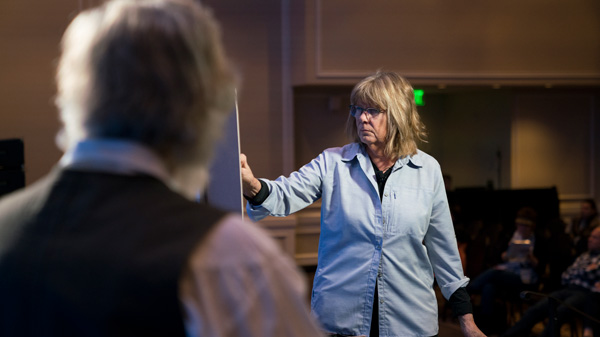
BY CAROLYN ANDERSON
www.carolynanderson.com
Warmer light does have cooler shadows – here’s why: It is light bouncing off objects that gives us the ability to see.
Light receptors within the eye transmit messages to the brain, which produce the sensations of color. Newton observed that color is not inherent in objects. Rather, the surface of an object reflects some colors and absorbs all the others. We perceive only the reflected colors.
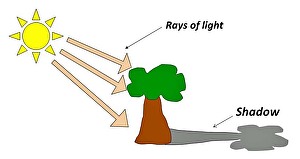
When an object blocks light, a shadow is formed. The shadow is the result of less light.
If the light is warmer, then less warm light is in the shadow. If the light striking an object is cooler, then there is less cool light in the shadow.
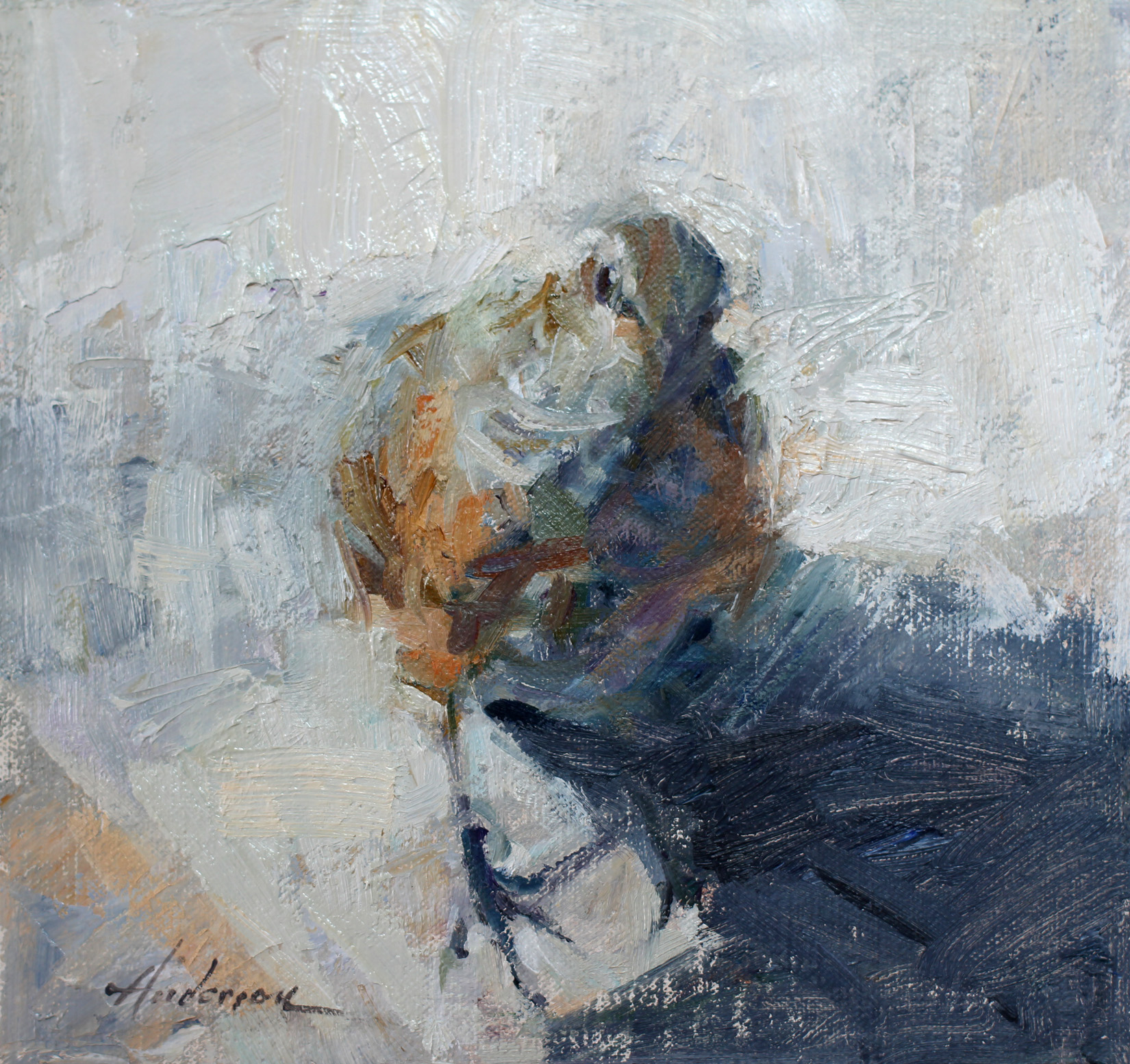
IMPORTANT NOTE FOR PAINTING SHADOWS: Seeing color is relative. We assess what a color is by comparing it to another color or range of colors. So the continued use of the words WARM and COOL, which imply an absolute value instead of a comparative, relative value, are misleading and lead to confused thinking and muddled seeing.
Whenever possible, refer to color temperature as WARMER and COOLER. This is more accurate and eliminates the idea that identifying a color as warm means it needs to fall within the general classification of “warm colors” which are red, orange, and yellow. Warmer simply means the color is warmer than another color.
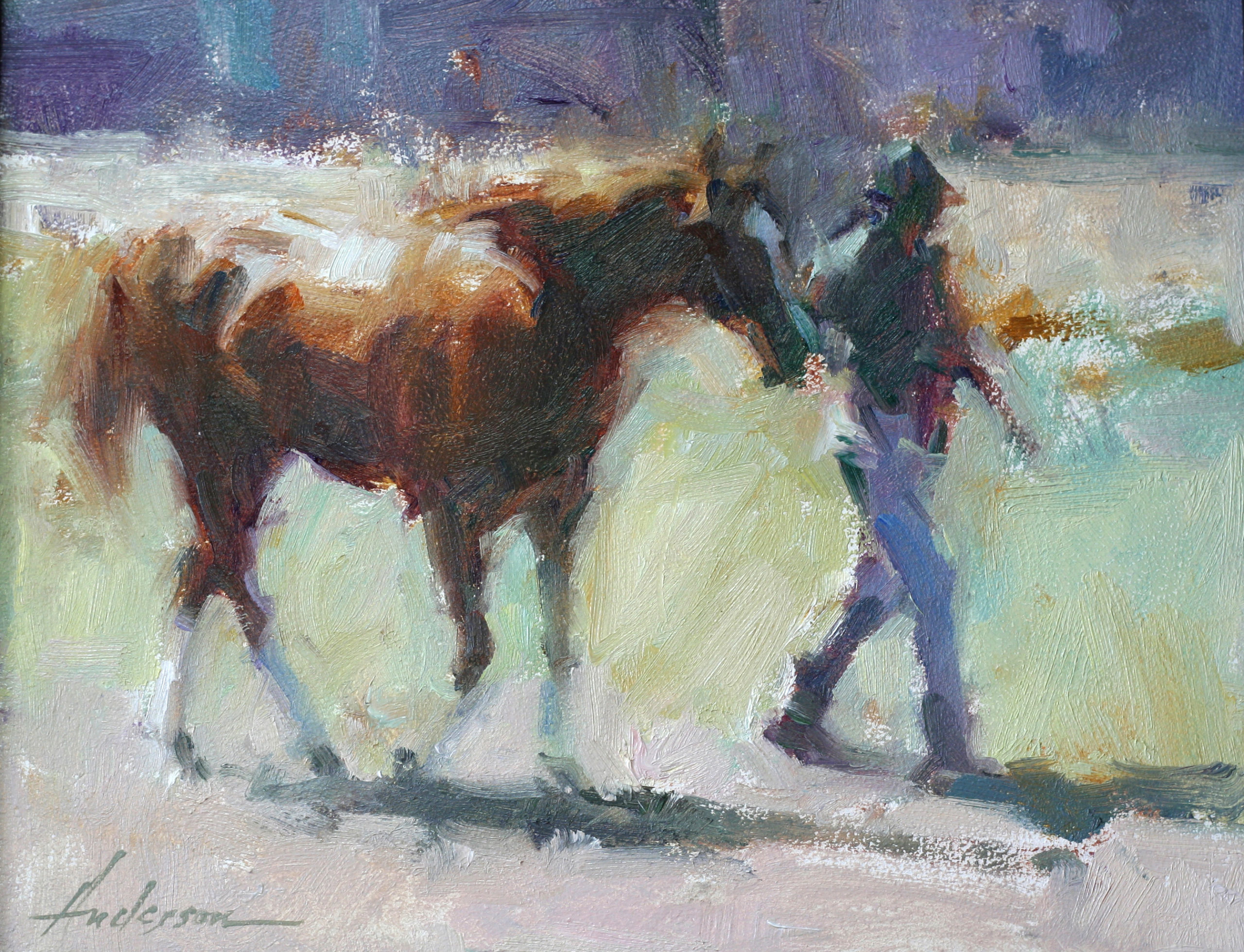
A warmer light hitting an object results in less warm light in the shadow. The shadow is less warm or cooler than the light. All those red-yellow-orange wavelengths are partially blocked or completely blocked from the shadow side of the object. The complexity (and sometimes confusion) of this scenario arises when there is indirect light (the general light in the room or the sky light outdoors). Indirect light affects the colors of both light and shadow. There may also be reflected or bounce light from other objects which further complicates how we see colors in light and shadow.
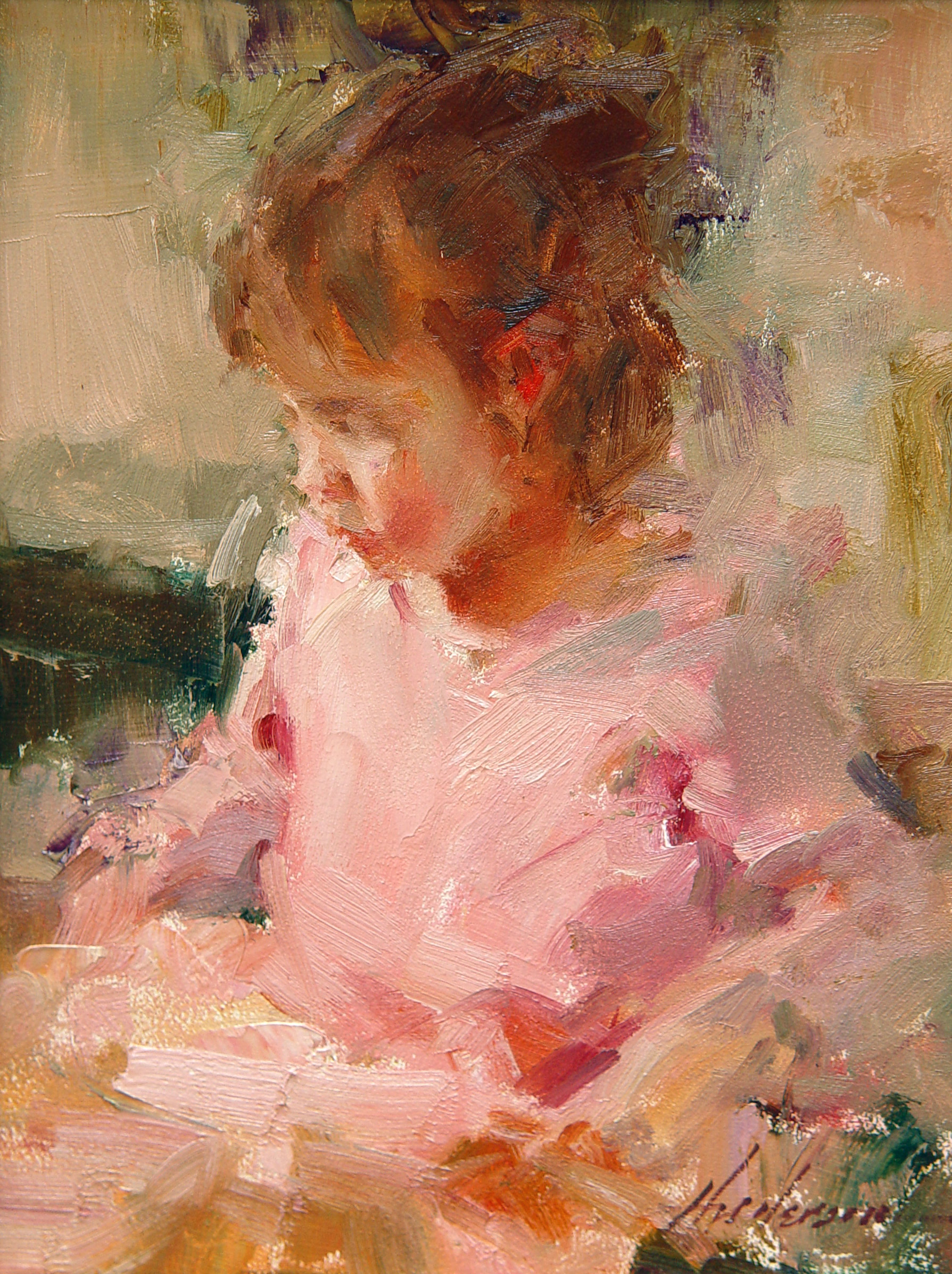
It is not absolutely necessary to evaluate all of this information – just LOOK! (Language does not always capture the nuance of visual information.) There may be warmer information within a cooler shadow. Be willing to accept and look for complexity within the simplicity of the maxim “warmer light has cooler shadows and cooler light has warmer shadows.” Complexity does not negate simplicity. It only enhances the explanation.
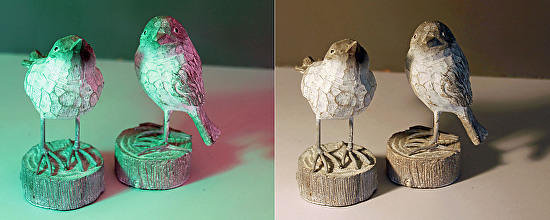
I photographed these birds with two different light sources. I used a green flood light for the birds on the left and a halogen light for the birds on the right. Notice the differences in color in both the light and the shadow.
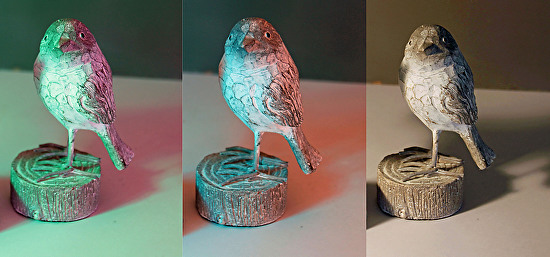
In this image I have added another bird photographed with a blue flood light to the images of the green and halogen lit birds. Compare, compare, compare.
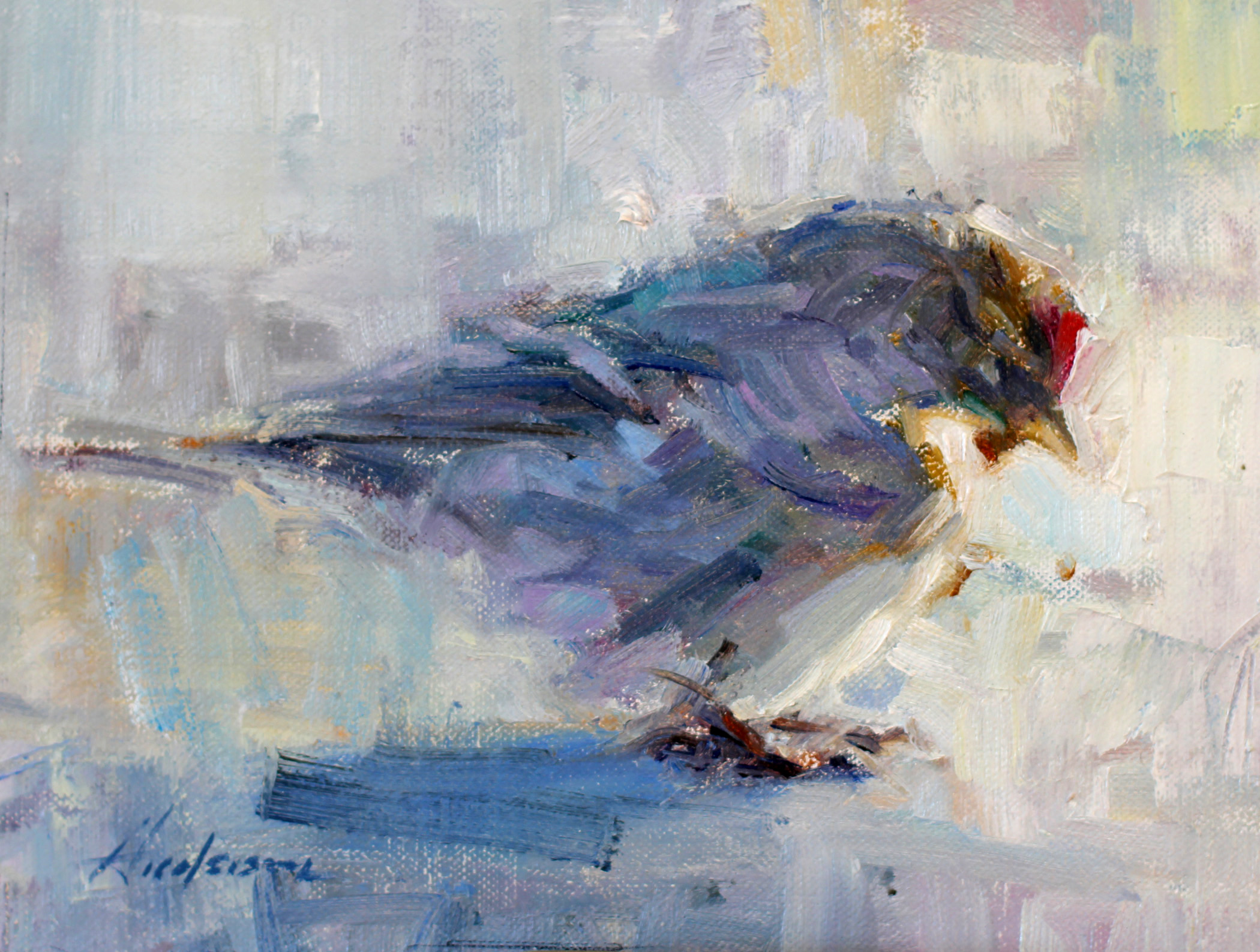
Connect with Carolyn Anderson: Website
Visit EricRhoads.com (Publisher of Realism Today) to learn about opportunities for artists and art collectors, including: Art Retreats – International Art Trips – Art Conventions – Art Workshops (in person and online) – And More!


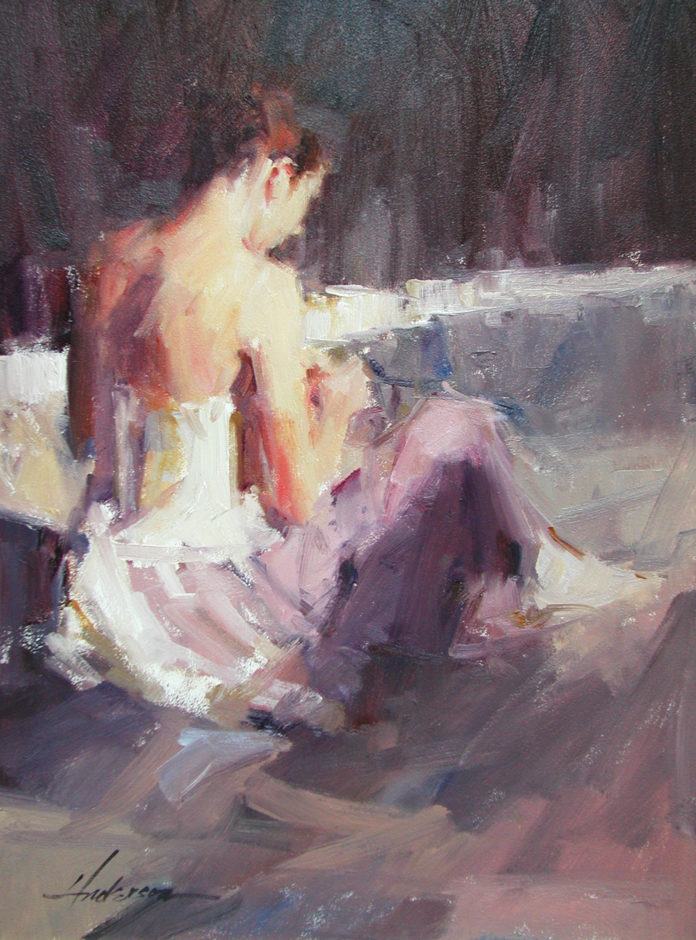




I will need to try the bird experiment myself with spheres, and with black velvet all around to eliminate secondary bounce light. I wonder if the digital camera is exaggerating the color differences. I generally trust my eyes but have never thought of setting something up and taking pictures to analyze this effect.
When I am in a museum I am constantly confused by the “choices” my phone makes when photographing paintings. Something that is a LITTLE blue-ish can turn into dazzling cobalt– have you noticed this? Could some of this be happening in your bird pics?
I thank you for your informative and interesting post!
JOHN MORRA
Thanks for the observation and the question, John. Yes, of course, there can be enhanced or exaggerated color changes from a digital camera, and also from film cameras. But the color will definitely not change from warmer to cooler, without using some kind of filter, and that would affect ALL the colors in the image. These images were photographed with a Sony RX10 camera, but it is as susceptible to modified color as a phone camera would be. That’s why photographing our own artwork can be so difficult. Reproducing the image on a computer or other digital screen can also affect the color. The principal of warmer-cooler color does not change, however. Warmer light will result in less warmer light in shadow, which means cooler colors will be more noticeable in shadow. Bounce light from secondary objects or other light sources can impact the color in the shadows and create even more complexity, and sometimes, confusion.
The use of warmer light, cooler shadows, and cooler light, warmer shadows is a clue for what colors to look for, and also an organizational tool for using color. And no, we cannot always trust our eyes! We perceive color in relation to other colors. The more we look, the more we see, and while that can be confusing, it’s those possibilities that make using color interesting.
Thanks; I love your colours and brushwork. Do you have a book or DVD?
Comments are closed.